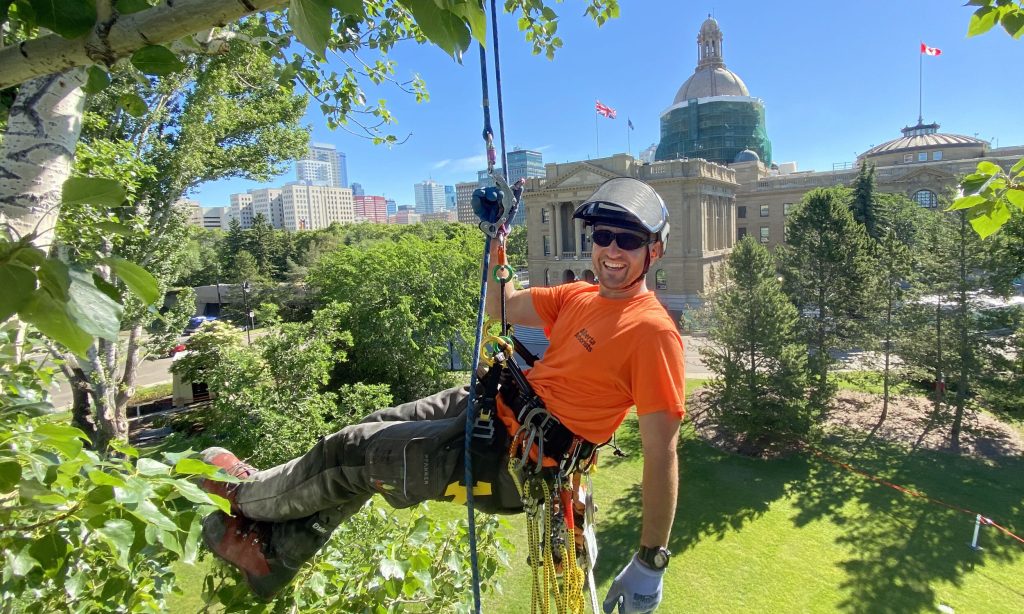Trees are a beautiful part of any yard, but when they grow wild and untamed, they can quickly become a problem. Overgrown trees aren’t just messy — they can be dangerous, unhealthy, and even costly. That’s why regular, affordable tree trimming from certified experts is more than just a chore — it’s a necessity.
Let’s explore why keeping your trees trimmed isn’t just about looks — it’s about safety, tree health, and protecting your home and family.
- What Makes a Tree “Overgrown”?
A tree is considered overgrown when it grows beyond its natural shape or starts to interfere with your home, power lines, or nearby structures. You might see branches hanging too low, growing too close to your roof, or spreading wider than they should.
Sometimes, overgrowth is caused by poor pruning in the past. Other times, it’s just nature doing its thing—especially if the tree species grows fast. If you notice dense foliage, tangled branches, or limbs that seem too heavy, your tree might need some help.
Overgrown trees can be a ticking time bomb. Here’s why:
- Falling limbs: Dead or heavy branches can snap and fall without warning, especially during storms.
- Roof and gutter damage: Branches scraping your shingles or clogging your gutters can lead to leaks and rot.
- Blocked sunlight: Thick canopies can prevent light from reaching your lawn or garden, leaving patches of dead grass.
- Power line interference: Trees touching utility lines are a fire and electrocution risk.
- Legal issues: If your tree damages a neighbor’s property, you might be liable.
Ignoring an overgrown tree can cost more than just curb appeal—it can lead to serious accidents and expensive repairs.
Overgrown trees often suffer from stress. When branches are packed too tightly, they can’t get proper airflow. That leads to moisture buildup, which invites fungus, pests, and disease.
An unbalanced tree (with more growth in the canopy than the roots can support) becomes weak and unstable. The trunk may split, limbs may fall, and decay can set in from the inside out.
Proper pruning helps prevent all of this. It opens up the canopy, removes dead or diseased limbs, and allows the tree to grow strong from root to crown.
It might be tempting to grab a saw and handle it yourself, but tree trimming isn’t a weekend project. It’s dangerous, especially with tall trees or thick limbs.
One wrong cut can:
- Damage the tree permanently
- Cause injuries from falling branches
- Ruin power lines or windows
- Create long-term structural problems in the tree
Professional arborists are trained in techniques like crown thinning, deadwood removal, and structural pruning. They know where to cut, how much to cut, and how to do it without harming the tree or your property. They also use proper safety equipment, including harnesses, rigging tools, and pole saws.
Trimming trees isn’t just about safety—it brings some surprising perks:
- Better light and airflow: This helps your grass, shrubs, and garden thrive.
- Boosts property value: A neat, healthy landscape adds to your curb appeal.
- Protects other trees: By trimming one tree, you prevent disease from spreading to others.
- Prepares for storms: Removing weak limbs before storm season lowers the risk of damage.
Think of trimming as a health checkup for your trees. It keeps them looking good and living longer.
There’s no one-size-fits-all answer—it depends on the tree type, age, and location. Here are some general rules:
- Young trees: Trim every 2–3 years to shape their growth.
- Mature trees: Every 3–5 years, depending on condition.
- Fast-growing species: May need annual trimming.
- After storms or disease: Trim as needed to remove damaged or infected branches.
Late winter or early spring is often the best time to trim. Trees are dormant, which reduces stress and allows for better healing.
If you’re not sure, a local arborist can inspect your trees and recommend a custom schedule.
When it comes to tree care, experience matters. That’s where companies like Midstate Tree shine. Serving Washington, NJ, and nearby counties, they bring 24+ years of expertise to every job.
Their team is:
- Licensed and insured
- Led by an ISA Board Certified Master Arborist
- Available 24/7 for emergencies
- Focused on safety and customer service
Whether it’s storm damage cleanup, pruning for health, or full tree removal, Midstate Tree does it right—the first time.
Q: Can trimming save a dying tree?
Sometimes. If the disease or decay hasn’t spread too far, removing infected limbs can help the tree recover.
Q: Is it okay to trim trees in the summer?
Light pruning is okay, but heavy trimming is best done in late winter or early spring when trees are dormant.
Q: Do all trees need trimming?
Yes, eventually. Even low-maintenance trees benefit from occasional thinning to keep them healthy and balanced.
Final Thoughts
Trees don’t just take care of themselves. Left alone, they can grow out of control—putting your home, safety, and property at risk. Professional trimming keeps your trees healthy, your yard beautiful, and your family protected.
So if your trees are starting to look a little wild, don’t wait for a storm or an accident to take action. Call in the experts and get the peace of mind that comes with a well-maintained landscape.



